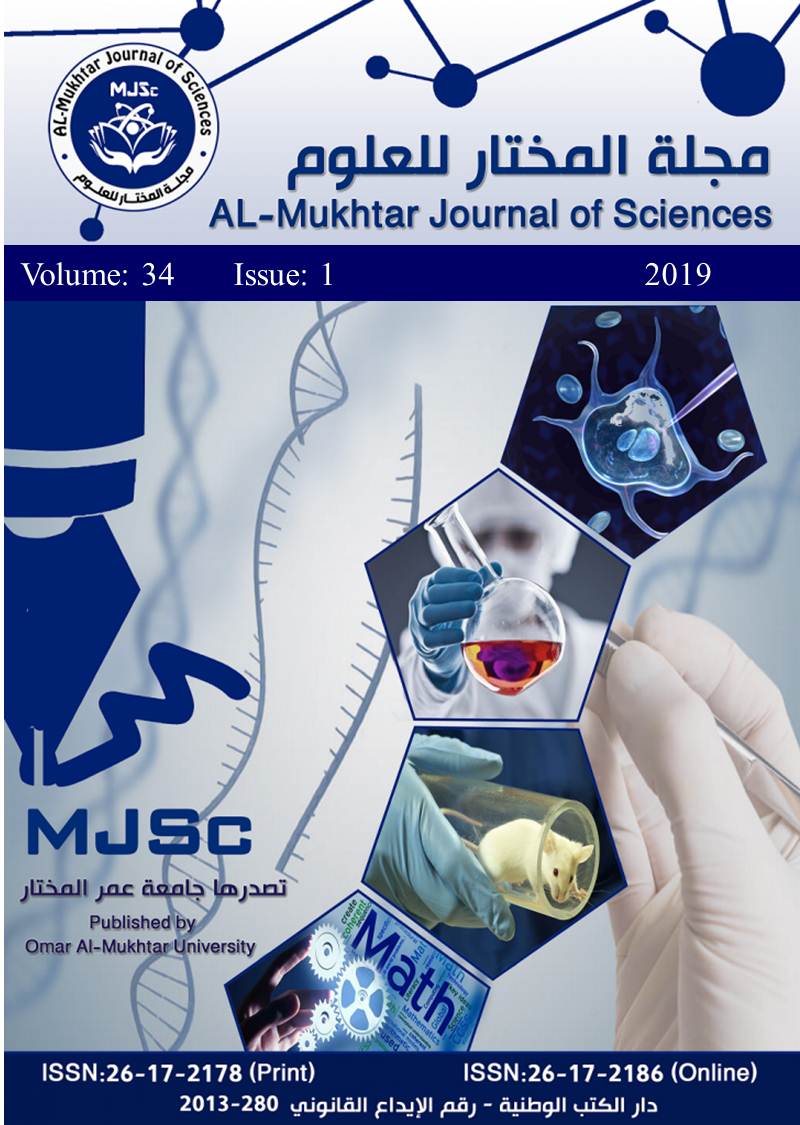Postpartum Uterine Bacterial Contamination without Clinical signs in Rela-tion to Reproductive Performance in Dairy Cows
DOI:
https://doi.org/10.54172/mjsc.v34i1.76Keywords:
uterus, bacteria, postpartum, reproductive performance and cowsAbstract
The study was performed to find out the relation between the uterine bacterial contaminations without clinical signs and postpartum (PP) reproductive performance of dairy cows. So that, uterine bacterial samples from postpartum dairy cows total (n = 44) were taken at 3rd, 15th and 30th day, and the bacterial count and score were applied. The animals were grouped to low, medium and high uterine bacterial contamination (15, 15, and 14 cows for each group respectively) according to score. Results revealed that uterine bacterial score (UBS) was decreased by the time in 3rd, 15th and 30th day (PP) for Low bacterial contamination group (5.73, 2.80, and 1.20 respectively), for Medium bacterial contamination group (7.80, 2.73, and 1.47 respectively), and for High bacterial contamination group (9.29, 6.57, and 2.21 respectively). Also, it revealed that there was a significant increase (P<0.05) in the duration of lochia in High than Low and Medium bacterial contamination groups. At 3rd day (PP), uterine location in all cows was represented in the abdominal cavity, but at15th day (PP), uterine involution as reaching to its normal non pregnant position in pelvic cavity was delayed in High (50%) than Low (80 %,) and Medium (53.30%) UBS groups. Moreover, at 30th day, uterine location in all cows was represented in pelvic cavity. The first estrus (PP) was significantly shorter in Medium, Low than High UBS groups. The number of services per conception showed a significant increase in High than in Low and Medium UBS groups. Also, at the 90th day (PP), the conception rate was lower in High UBS group than Low UBS group and Medium UBS group. We conclude that there was a relation between postpartum uterine bacterial contamination without clinical signs especially high contamination and reproductive performance in cows.
Downloads
References
Abeywansa, W., Abeygunawardena, H., & Jayatilaka, M. (1991). Assessing the uterine involution and postpartum ovarian activity of indigenous zebu cattle in Sri Lanka.
Ahmed, F. O., & Elsheikh, A. S. (2013). Uterine bacterial infection during postpartum delays the recrudescence of the reproductive traits in dairy cows. Journal of American Science, 6, 9.
Azawi, O. (2008). Postpartum uterine infection in cattle. Animal reproduction science, 105(3-4), 187-208.
Cain, D., Hanks, H., Weis, M., Bottoms, C., & Lawson, J. (2013). Microbiology laboratory manual. Collin County Community College District, McKinney, TX.
Dobson-Hill, B. C. (2009). Uterine involution in the dairy cow: comparative study between organic and conventional dairy cows: a thesis presented in partial fulfilment of the requirements for degree of Masters of Science in Animal Science, Massey University, Palmerston North. Massey University.
Engelken, T. J., Trejo, C., & Voss, K. (2007). Reproductive health programs for beef herds: analysis of records for assessment of reproductive performance Current Therapy in Large Animal Theriogenology (pp. 490-496): Elsevier.
Fodor, I., & Ózsvári, L. (2015). The evaluation of reproductive performance in dairy herds.
Foeldi, J., Pecsi, A., Szabo, J., Kulcsar, M., Egyed, L., & Huszenicza, G. (2008). The pathogens and the cause of uterine disease. Paper presented at the REPRODUCTION IN DOMESTIC ANIMALS.
Gitonga, P. N. (2010). Pospartum reproductive performance of dairy cows in medium and large scale farms in Kiambu and Nakuku Districts of Kenya. Thesis. University of Nairobi Faculty of Veterinary Medicine.
Gustafsson, H., Kornmatitsuk, B., Königsson, K., & Kindahl, H. (2004). Peripartum and early post partum in the cow-physiology and pathology. MEDECIN VETERINAIRE DU QUEBEC., 34, 64-65.
Habib, M., Bhuiyan, A., & Amin, M. (2010). Reproductive performance of Red Chittagong cattle in a nucleus herd. Bangladesh Journal of Animal Science, 39(1-2), 9-19.
Lee, P. S. (2009). Quantitation of microorganisms. Practical Handbook of Microbiology, 3, 19-38.
Lewis, G. S. (1997). Symposium: health problems of the postpartum cow, uterine health and disorders. Journal of Dairy Science, 80(5), 984-994.
Miah, A. G., Salma, U., & Hossain, M. (2004). Factors influencing conception rate of local and crossbred cows in Bangladesh. International Journal of Agriculture and Biology, 6(5), 797-801.
Overton, M. W. (2009). Using reproductive records: Basics of monitoring:
Rahim Ahmadi, M., Nazifi, S., & Reza Ghaisari, H. (2006). Comparative cervical cytology and conception rate in postpartum dairy cows. Veterinarski arhiv, 76(4), 323-332.
Saut, J. P. E., Oliveira, R., Martins, C. F. G., Moura, A. R. F., Tsuruta, A., Nasciutti, N. R., Headley, A. (2011). Clinical Observations of postpartum uterine involution in crossbred dairy cows. Vet. Not, 17, 16-25.
Schefers, J., Weigel, K., Rawson, C., Zwald, N., & Cook, N. (2010). Management practices associated with conception rate and service rate of lactating Holstein cows in large, commercial dairy herds. Journal of Dairy Science, 93(4), 1459-1467.
Sheldon, I., Noakes, D., Rycroft, A., Pfeiffer, D., & Dobson, H. (2002). Influence of uterine bacterial contamination after parturition on ovarian dominant follicle selection and follicle growth and function in cattle. REPRODUCTION-CAMBRIDGE-, 123(6), 837-845.
Sheldon, I. M., & Dobson, H. (2004). Postpartum uterine health in cattle. Animal reproduction science, 82, 295-306.
Wettemann, R. (1980). Postpartum endocrine function of cattle, sheep and swine. Journal of Animal Science, 51(suppl_II), 2-15
Downloads
Published
How to Cite
License

This work is licensed under a Creative Commons Attribution-NonCommercial 4.0 International License.
Copyright of the articles Published by Almukhtar Journal of Science (MJSc) is retained by the author(s), who grant MJSc a license to publish the article. Authors also grant any third party the right to use the article freely as long as its integrity is maintained and its original authors and cite MJSc as original publisher. Also they accept the article remains published by MJSc website (except in occasion of a retraction of the article).










